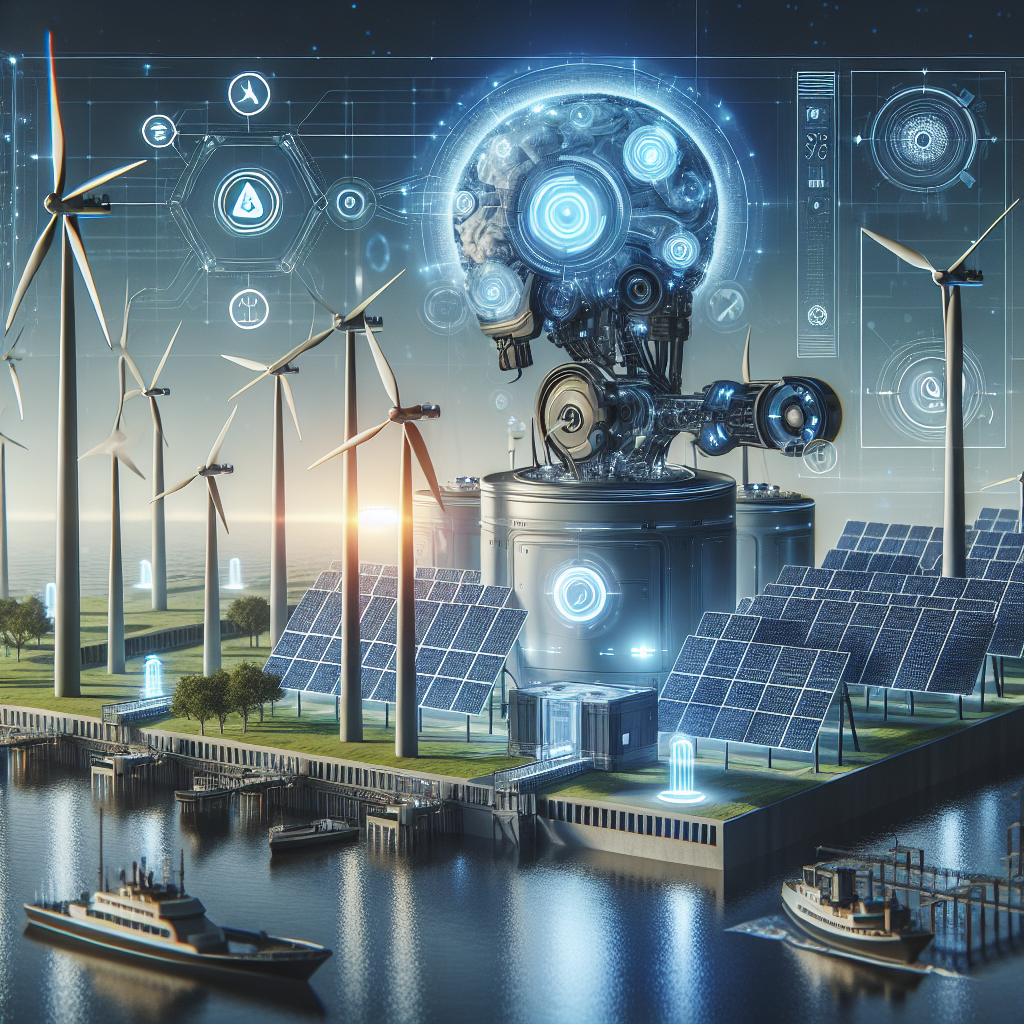The Future of AI in Enhancing Energy Efficiency in Renewables
Introduction
Artificial Intelligence (AI) is revolutionizing various industries, and the energy sector is no exception. With the increasing focus on renewable energy sources to combat climate change, AI is playing a crucial role in enhancing energy efficiency in renewables. AI technologies such as machine learning, predictive analytics, and optimization algorithms are being used to maximize the output of renewable energy sources like solar, wind, and hydro power. In this article, we will explore how AI is being used to enhance energy efficiency in renewables and what the future holds for this exciting technology.
AI in Renewable Energy
Renewable energy sources like solar and wind power are variable in nature, meaning that their output fluctuates based on factors like weather conditions and time of day. This variability can make it challenging to predict and optimize the output of these energy sources. However, AI technologies are enabling more accurate predictions and better optimization of renewable energy systems.
One of the key ways AI is enhancing energy efficiency in renewables is through predictive analytics. By analyzing historical data and real-time information, AI algorithms can predict the output of renewable energy sources with greater accuracy. This allows energy operators to better plan and manage their energy production, leading to increased efficiency and lower costs.
AI is also being used to optimize the operation of renewable energy systems. For example, AI algorithms can adjust the angle of solar panels or the pitch of wind turbines to maximize energy production based on current weather conditions. This optimization can significantly increase the efficiency of renewable energy systems and improve their overall performance.
Another way AI is enhancing energy efficiency in renewables is through demand-side management. AI algorithms can analyze energy consumption patterns and predict peak demand times, allowing energy operators to adjust their production accordingly. By reducing energy waste during low-demand periods and optimizing energy production during peak times, AI can help improve the overall efficiency of renewable energy systems.
The Future of AI in Enhancing Energy Efficiency in Renewables
As AI technologies continue to evolve, the future of enhancing energy efficiency in renewables looks promising. Here are some key trends to watch for in the coming years:
1. Increased Automation: AI technologies are becoming increasingly sophisticated, allowing for greater automation of renewable energy systems. This automation can help reduce human intervention and optimize energy production in real-time, leading to improved efficiency and lower costs.
2. Integration with IoT: The Internet of Things (IoT) is enabling the connection of various devices and sensors in renewable energy systems. By integrating AI with IoT technologies, energy operators can gather more data and make better decisions to enhance energy efficiency.
3. Advanced Machine Learning: Machine learning algorithms are constantly improving, allowing for more accurate predictions and optimization of renewable energy systems. As these algorithms become more advanced, the efficiency of renewable energy systems will continue to increase.
4. Energy Storage Solutions: AI is also being used to optimize energy storage solutions like batteries. By analyzing data on energy consumption and production, AI algorithms can help maximize the efficiency of energy storage systems, ensuring that renewable energy is available when needed.
5. Grid Optimization: AI technologies are being used to optimize energy grids, ensuring a smooth and efficient flow of energy from renewable sources to consumers. By analyzing data on energy demand and production, AI algorithms can help balance the grid and prevent disruptions.
FAQs
Q: How does AI help improve the efficiency of solar energy systems?
A: AI technologies can analyze data on weather conditions, sun angle, and energy production to optimize the operation of solar panels. By adjusting the angle of solar panels based on real-time information, AI can maximize energy production and improve the overall efficiency of solar energy systems.
Q: Can AI help reduce the costs of wind energy production?
A: Yes, AI technologies can optimize the operation of wind turbines by adjusting their pitch and speed based on current wind conditions. By maximizing energy production and reducing maintenance costs, AI can help lower the overall costs of wind energy production.
Q: How does AI contribute to the integration of renewable energy sources into the grid?
A: AI algorithms can analyze data on energy demand and production to optimize the flow of renewable energy into the grid. By balancing supply and demand in real-time, AI technologies can help integrate renewable energy sources like solar and wind power more efficiently into the grid.
Conclusion
AI is playing a crucial role in enhancing energy efficiency in renewables, and the future looks promising for this exciting technology. By leveraging AI technologies like machine learning, predictive analytics, and optimization algorithms, energy operators can maximize the output of renewable energy sources and improve the overall efficiency of renewable energy systems. As AI continues to evolve, we can expect to see even greater advancements in enhancing energy efficiency in renewables, leading to a more sustainable and environmentally friendly energy future.

